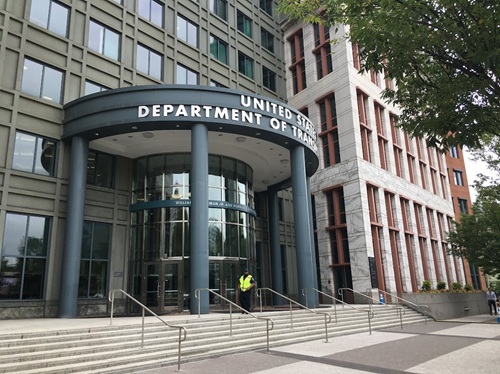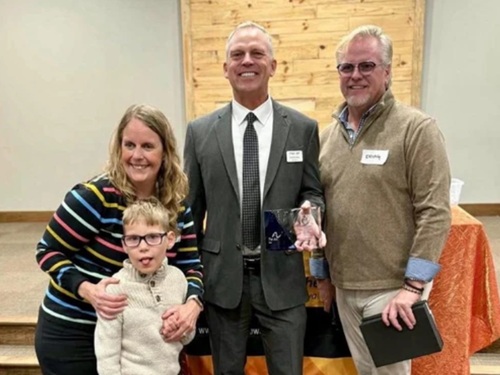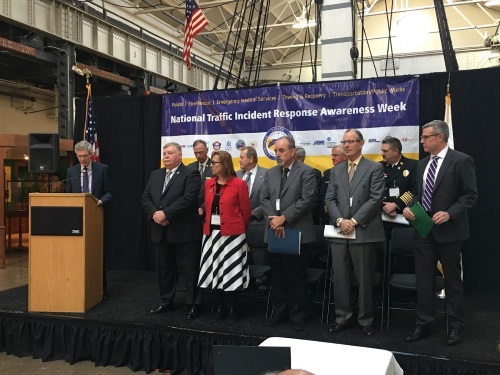The value of traffic incident management or TIM training is threefold from a state department of transportation perspective: saving time, money, and, most importantly, lives.
That’s the argument Jim Tymon, executive director of the American Association of State Highway and Transportation Officials, made at the third senior executive transportation and public safety summit sponsored by the Federal Highway Administration in Washington, D.C.

“Whether it is walking, biking, riding or driving, America moves on a transportation system built, operated, and maintained by state DOTs [and] TIM is important in clearing the congestion caused by motor vehicle incidents, which decreases the likelihood of secondary crashes as well as traveler delays and driver frustration that comes along with those delays,” he explained in remarks on November 14; the first day of the two-day summit, held at the U.S. Navy Museum on the grounds of the Washington Navy Yard.
“AASHTO views effective traffic incident management as a key transportation system management operations strategy that can help state DOTs get the most out of their existing infrastructure. It also helps states strategically manage corridors with local agencies and responders so as to be prepared when incidents happen,” Tymon emphasized. “We really believe work with transportation agencies and responder agencies can save money, time, and lives by committing to traffic incident management training.”

Mike Tooley, director of the Montana Department of Transportation and chairperson of the AASHTO Committee on Safety, reiterated those points as part of a panel discussion at the summit.
“Our vision is a highway system free of fatalities and that relies on two primary concepts: doing more of what works on the infrastructure side while also improving traffic safety culture,” he said. “It’s more than just education; it’s about getting through to people that when they are behind the wheel of a motor vehicle they are engaged in a potentially deadly task – and we need to get that through to every user, on every trip.”
Tooley added that doing “more of what works” includes more effective TIM training as it can help alleviate significant traffic delays.

“Getting an incident off the road quickly reduces congestion by up to 60 percent,” he explained, adding that such a reduction in congestion results in part from the prevention of secondary crashes.
To illustrate that point, Chief Daniel Sharp, chair of the highway safety committee for the International Association of Chiefs of Police, noted that the chances of a secondary crash occurring increase by 2.4 percent for every minute the primary crash is not cleared from the roadway.
Elaine Chao, secretary of the U.S. Department of Transportation, said in her remarks at the summit that those points are part of a crucial overhaul of the nation’s overall strategy for reducing roadway fatalities and injuries.

“I know I am speaking to the choir here but we need to focus and redouble our efforts,” she explained to the transportation and public safety executives attending the event.
“We need to identify and mitigate the factors contributing to serious crashes and that means gaining a better understanding of the relationship between roadway design, speed, crashes, and outcomes. We’ve got to address the process – and you are part and parcel of this; the critical link to getting it done,” Sec. Chao said.
To that end, USDOT made a pool of $3 million in grant money available via a notice of funding opportunity on November 14 to help state, local, and tribal governments develop “innovative data tools and information” to improve roadway safety. In a statement, the agency anticipates making awards of $250,000 to $500,000 to each successful applicant.
“This is a vital and important mission; making America’s roads safer for everyone,” the secretary added. “This is a mission that is larger than any one agency or any one person because only by working together can we prevent bad things from happening.”
 Top Stories
Top Stories
USDOT Issues $1B in Local Road Safety Funding
January 2, 2026 Top Stories
Top Stories

